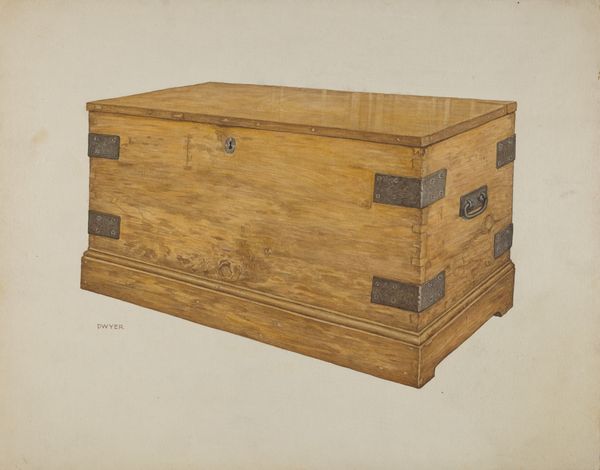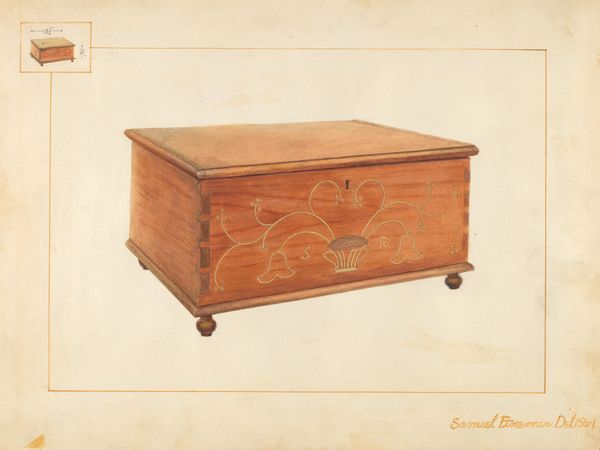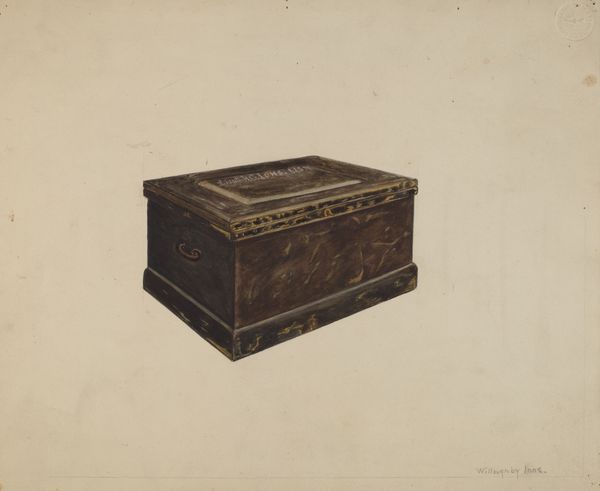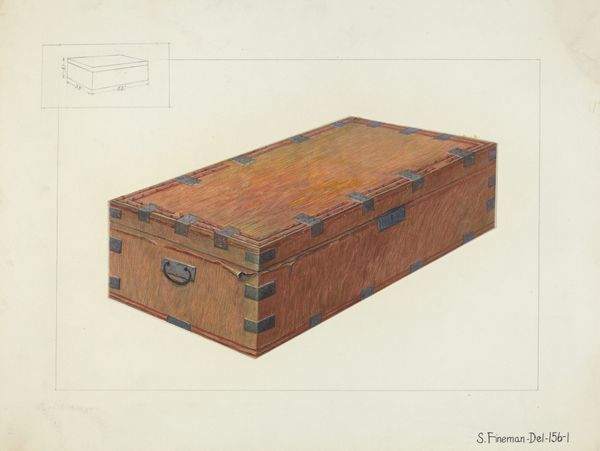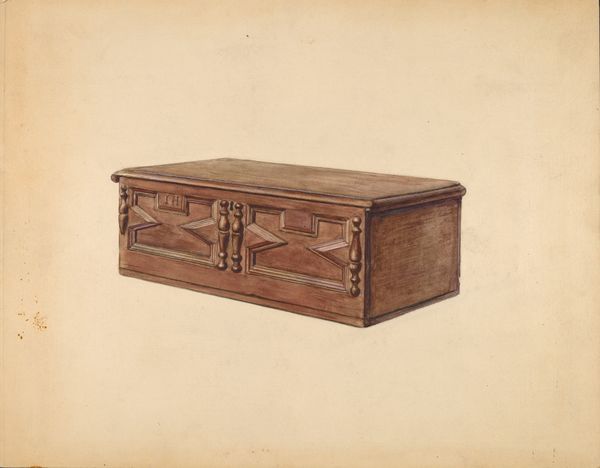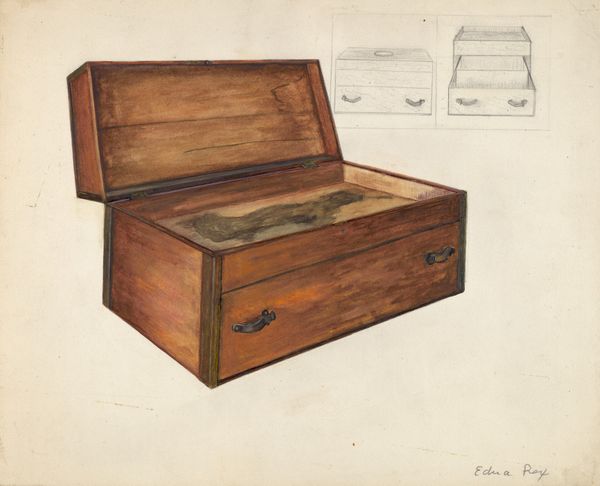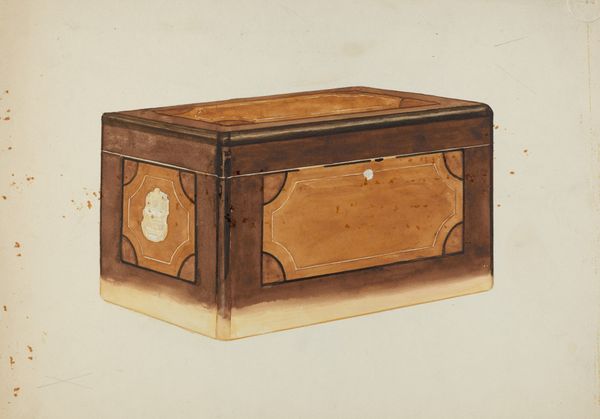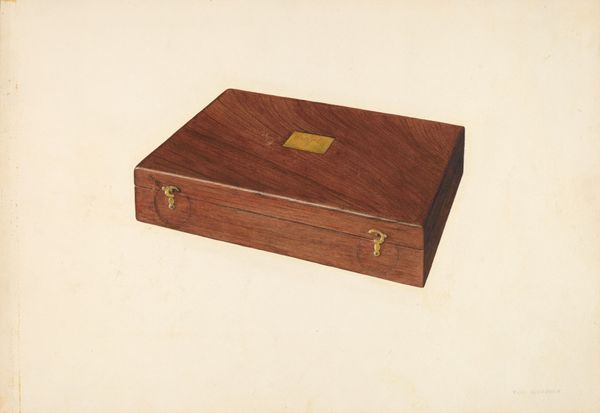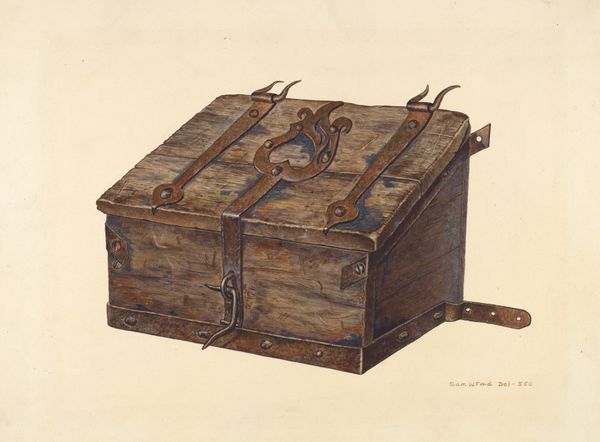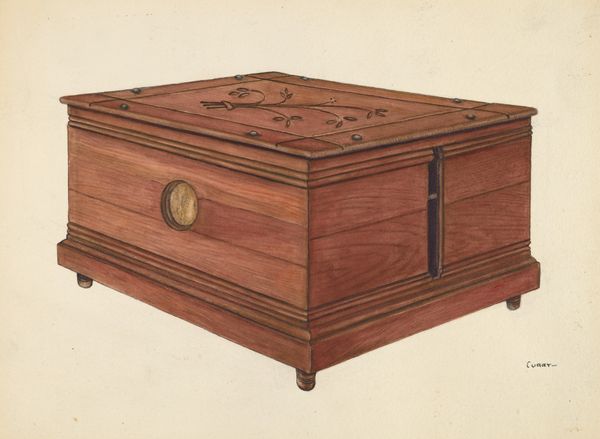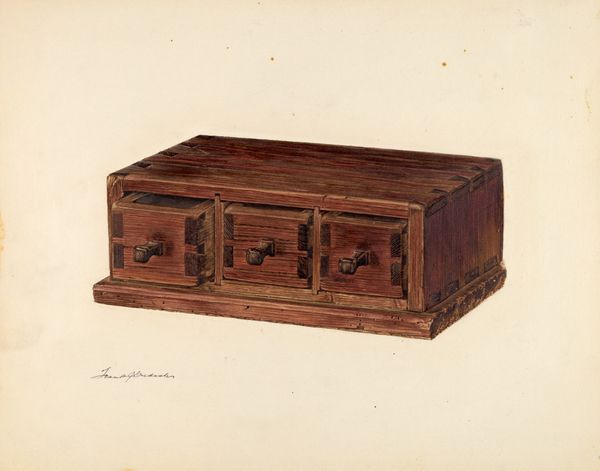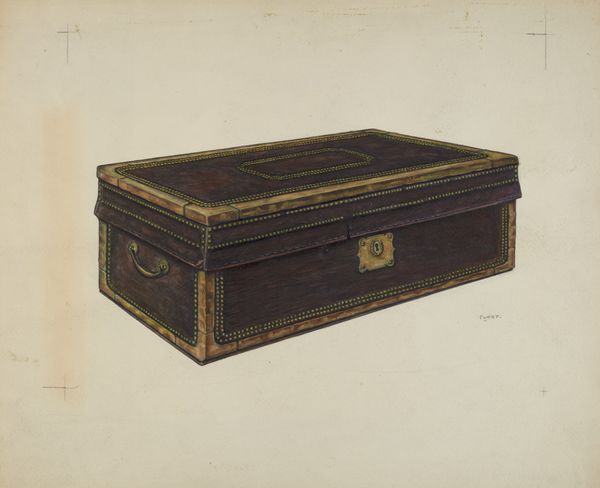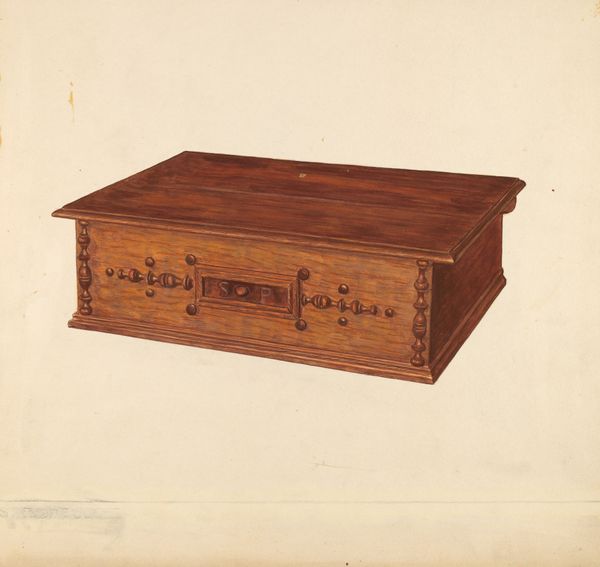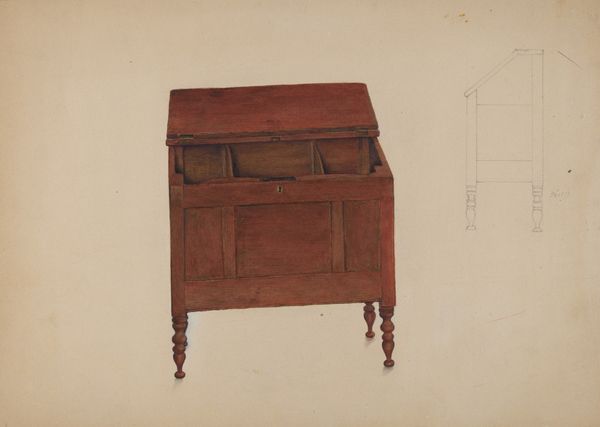
drawing, pencil
#
drawing
#
pencil
#
watercolor
Dimensions: overall: 22.7 x 31 cm (8 15/16 x 12 3/16 in.) Original IAD Object: 48"long; 22"wide; 22"high
Copyright: National Gallery of Art: CC0 1.0
Editor: Here we have Samuel Fineman's "Money Chest in Old Swedes Church," made around 1938. It's a pencil drawing, possibly touched with watercolor, depicting, well, a money chest! It looks pretty solid and functional. What strikes you most about this piece? Curator: What I find fascinating is not just the depiction of a common object, but how Fineman uses this drawing to document a specific cultural and institutional artifact. We're not just seeing a chest; we're seeing a chest *in situ*, imbued with the history of Old Swedes Church. Consider why this chest was important enough to document, and how that choice reflects societal values around finance, religion, and historical preservation in the late 1930s. What do you think this image tells us about the church's relationship with its own history? Editor: That’s interesting. It does make me think about the church's legacy, and how they wanted to remember – and maybe control – the narrative of their own financial history. Curator: Precisely. Furthermore, the very act of Fineman creating this drawing for the Historic American Buildings Survey underscores the changing perception of early American history. Did you notice the precise technical style? It suggests a desire for accuracy and objectification of the past. What social context could contribute to that perceived "need"? Editor: I guess it was part of a broader movement in the 1930s to appreciate and preserve early American heritage, as a kind of cultural anchor during times of economic hardship and uncertainty. The style feels intentionally documentary. Curator: Exactly! It reminds us that artistic choices are intertwined with larger socio-political forces, especially how institutions like churches or the government influence art production. I never thought a drawing of a simple chest could reveal so much. Editor: Me neither! It’s really eye-opening to see how historical context can reshape our understanding of an artwork.
Comments
No comments
Be the first to comment and join the conversation on the ultimate creative platform.
